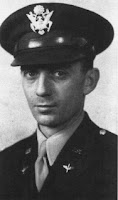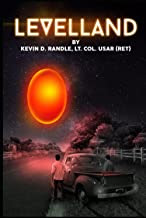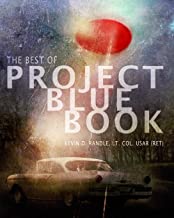Although
I was working on another project, this Chiles-Whitted thing is beginning to get
out of hand, so I thought I’d just run through it again based on the Project
Blue Book files, various newspaper reports from the time, and what has been
said
about the case in the years since by a number of UFO writers. There has
been some evolution in the sighting details over the years but I’m not
completely sure the blame can be laid at the feet of Chiles or Whitted. Their
statements, for the most part, have remained consistent.
 |
| Chiles' Drawing |
According
to the documentation, gathered in the hours after the sighting, Captain
Clarence S. Chiles and John B. Whitted were flying an Eastern Airlines DC-3 at
about 5,000 feet, heading toward Atlanta. The night was clear and the moon was bright.
They were twenty miles from Montgomery, Alabama, when Chiles saw a bright
object in front of them. He tapped Whitted on the shoulder and told him that
“Here comes a new Army jet job.” (It would seem that the glow of the jet engine
would be what Chiles thought he saw and that would mean the aircraft was flying
away from him but I digress.)
 |
| Whitted's Drawing |
It
appeared to them to be slightly above them and coming directly at them. It
flashed by them on the right. Both Chiles and Whitted said that it was
cylindrical in shape and that there was a double row of windows along the side.
They thought it was about double the size of a B-29 fuselage in circumference
and there was a long flame from the rear. As it passed them, one of the
passengers, Clarence L. McKelvic, said that he saw a steak of light but no
object. It seemed to climb into the clouds and disappear. The object was in
sight for something like five or ten seconds.
Chiles
called the company on the radio and asked if there was any other traffic in the
area, meaning were there any aircraft near him. After they landed in Atlanta at
0349, they learned that the encounter had already been reported to the media.
They were taken to radio station WCON and later were interviewed by William Key
for the Atlanta newspaper. This provides a record of their descriptions within
hours of the sighting.
The
Air Force was impressed with the sighting. It might have been because both
Chiles and Whitted had been military pilots during World War II. Chiles had
been a lieutenant colonel and Whitted had been a first lieutenant. The report
in the Project Blue Book files suggest that both were qualified observers,
meaning that they were familiar with aircraft and had seen most of the natural
phenomena that would be observed in the night sky.
At
first the Air Force suggested a weather balloon but then switched to meteor.
Chiles and Whitted both rejected the idea, explaining the object was much
closer and much slower than a meteor. They also mentioned that they had to
maneuver to avoid a collision. Although that information does not appear in the
first official accounts, it was reported by Key in his first article. Chiles
said, “We veered off to the left and the object veered off to the left.”
He
also said, “There was no prop wash or rough air felt as it passed.”
In
1960, in a description of the sighting in a letter to ATIC dated February 17, an
unidentified civilian wrote, “The UFO was now almost on top of them. Chiles
rocked the DC-3 into a tight left turn. Just as the UFO flashed by about 700 feet
to the right, the DC-3 hit turbulent air.”
In
1968, James McDonald interviewed Chiles. One of the points to come out of that
was the idea that the object came out of a squall line. The weather that night
was described as broken clouds in 4/10s of the sky. We are told that there was
a bright moon and there is no mention of a squall line anywhere.
There
was another sighting that took place about fifteen minutes earlier near
Blackstone, VA. Captain Perry R. Mansfield and co-pilot Louis Feldvary on
another flight saw only a streak of light that seemed to be heading west. It
was in sight for only three seconds. The Air Force concluded, in 1948, after
their investigation that this object was most probably a meteor, given the lack
of detail and the brief length of time the object was in sight.
Donald
Menzel, the Harvard astronomer and rabid debunker, reported that on the night
of July 24, an amateur astronomer in Alabama counted fifteen meteors in a one-hour
period. That was part of an annual meteor shower so the rate of meteors hitting
the atmosphere was higher than non-shower times.
In
the Blue Book files there is a note suggesting that this might be a meteor,
though if it had maneuvered to avoid the aircraft, then it was not a meteor and
it was under intelligent control. There was a suggestion that a passing of a
meteor might produce a perceptual artifact such as the double row of windows,
but that it was something to be left to the psychologists.
It
turned out, based on other evidence, that such is the case. March 3, 1968,
provided a textbook example. The Zond IV spacecraft reentered the atmosphere
and broke up in a spectacular flaming display. Most people recognized it for
what it was, but a few thought they had seen a cigar-shaped craft with windows
along the side.
 |
| Zond IV Drawings |
Taking
this a step further are the videos that appear on YouTube. There are dozens
that show meteors as they break up, often looking like a glowing cockpit with a
stream of fragments behind it looking just like the lighted windows along a
fuselage.
There
are those who say that Chiles and Whitted could not have seen a meteor because
it was traveling too slowly and it was much too low. They said that it
disappeared into the clouds and though McDonald reported they had seen it come
out of a squall line, that doesn’t seem to be accurate based on the weather
data available.
An
object seen against the night sky, through a broken cloud cover, can be quite
deceptive. It can appear closer than it is, traveling at a slower speed then it
was. Chiles thought the object passed within 700 feet of his aircraft but
Whitted thought it was about 2500 feet away.
Their
drawings of the object, other than the general shape, don’t match very well,
given that they had about an hour to discuss this before the aircraft landed.
Whitted said that he saw a double row of six windows and his illustration shows
that arrangement. Chiles drawing has a different front end and no real windows
like that of Whitted. Of course some of this is nitpicking, but then, the
differences do suggest they weren’t actually seeing the thing the same way.
There
is one other aspect that needs to be discussed and that is Walter Massey who
was a ground maintenance crewman at Robins Air Force Base in Georgia. I mention
this so that there will be no accusations of hiding information. I’m not sure
it is relevant given the timing and the distance but the Air Force as well as
other civilian investigators have suggested a connection.
At
about 0140 or 0145, or about an hour before Chiles and Whitted had their
sighting, Massey said that he had seen a stream of fire that he said, “…was a
fairly clear outline and appeared to be cylindrical-shaped object, with a long
stream of fire coming out of the tail end… I noticed a faint glow on the belly
of the wingless object.” He said that he was sure it wasn’t a meteor.
Massey
said that the trajectory of the object was more or less straight and level. He
said that it was about the size of a B-29 and that the fuselage might have had
a slightly larger circumference. It was too large for a jet.
But
this was an hour before Chiles and Whitted and might not be related. By separating
the sightings, the explanation becomes simpler. Two separate events. Linked,
then you must ask what sort of meteor stays airborne for an hour.
Given
all the information, given the description of the object and given the
misidentification by some of the Zond IV reentry, I believe that a meteor, or
rather a fireball (bolide), is the most likely answer. Or, as some others have
pointed out, there is nothing to disqualify that as an answer. All the
information suggests meteor (which I say at the risk of sounding like Philip
Klass who invoked the
meteor explanation frequently).
 |
| Meteors in Flight |
And
yes, as far as I know, Chiles and Whitted never deviated from their original
story and their original descriptions. They rejected the meteor theory from the
moment they heard it. They were convinced they had seen some sort of craft that
was not part of any countries aviation inventory and was therefore
extraterrestrial in origin. For me, the answer seems to be a bolide, but then,
you can argue that the experienced aviators wouldn’t have been easily fooled.
You just have to pick the side where the evidence seems to be the strongest.

























